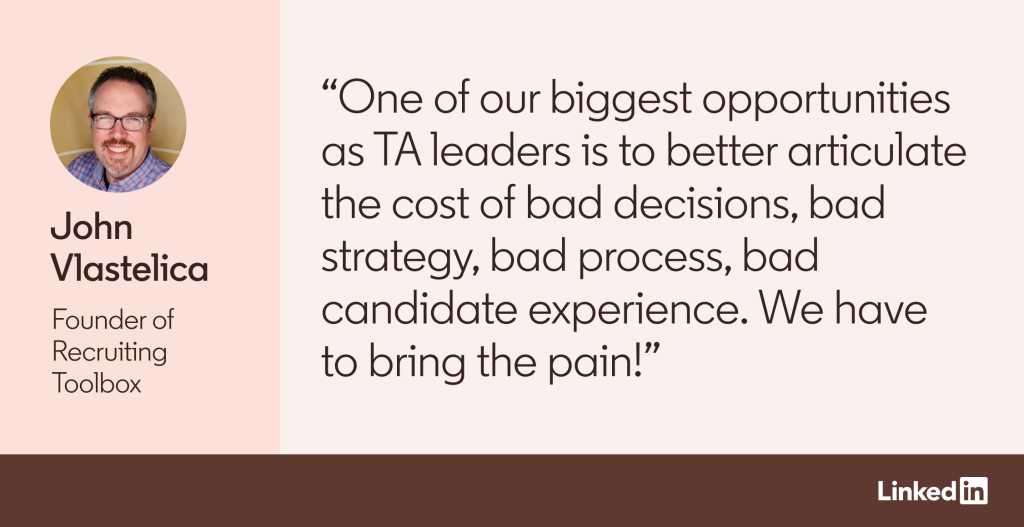“Keeping pace with AI adoption,” Terri says, “will require employees to upskill and reskill continually — and HR will enable much of this learning. However, employees are often resistant to change, and some may be apprehensive about artificial intelligence. So, be authentic and transparent and make sure that the learning includes use cases that are relatable, resonant, and come alive for them.”
4. AI impacts the C-suite — as learners and leaders
As AI makes its way into all areas of the business, it’s important that senior executives — and other aspiring leaders — begin their own journeys into the world of AI to understand its uses and implications.
According to the LinkedIn report AI at Work, just over half (51%) of U.S. executives are excited about AI advancements, but do not yet know how they will leverage AI tools and skills. And business leaders are “2x more interested in using AI to increase productivity than to cut headcount,” according to Microsoft’s 2023 Work Trend Index Annual Report.
With this in mind, learning professionals must create ways to train leaders on how to use AI to be more efficient in their day-to-day work. Executives will also benefit from leadership training that tackles the bigger issues, including how to ensure responsible AI, that come with the arrival of new technology to the workplace.
“Leaders must ensure that humans remain the sole decision-makers,” says Pinar Seyhan Demirdag in her course, What is Generative AI? “Ultimately, the goal is to strike a beautiful balance between leveraging the power of generative AI to enhance human creativity and imagination and optimizing production, while also maintaining human control and oversight over this advanced technology.”
5. L&D pros are uniquely positioned to help employees build business-critical AI skills
AI has already created a shift in how we work, with a recent McKinsey survey showing that 79% of respondents have had some exposure to generative AI and 22% are using it regularly in their own work. And as even more AI tools come into play in the coming years, L&D teams are in a unique position to guide their organizations through change: They can help everyone keep pace and adapt, while also building a culture of continuous development around AI.
As Frederick Nwanganga says in his course Machine Learning with Python: Foundations, “The skills you acquire in these courses should serve as a stepping stone to continue learning and exploring how to solve more complex problems.”
Think of AI as similar to onboarding any new tool: Explain the “why” behind it and share ways in which it can be used. You can also set an example by implementing AI for core L&D functions and sharing the benefits (and maybe even the roadblocks) of streamlining and simplifying your work.
For example, learning pros are already harnessing AI to jump-start tasks such as identifying missing or underdeveloped skills on their teams so they can build targeted development programs. It also helps them create employee development plans that accommodate each learner’s progress and performance.
Final thoughts: Emphasize experimentation over mastery
AI isn’t a skill you learn once and then you’re done. It’s a fast-moving field where everyone is learning as they go.
“AI is reinventing the world of work,” says Dan Brodnitz, global head of content strategy at LinkedIn Learning. “It’s challenging employees to think about and build new skills, but also grow future-focused careers. L&D pros are at the center of this shift as they guide employees on this journey.”
If you haven’t started using AI yet, take some of the courses above to start learning how it can help you at work today. If you’re already using AI on a daily basis, keep experimenting. Employees and businesses are just beginning to scratch the surface of what’s possible.
Insights provided by Jamila Smith-Dell. The top 10 most popular AI/GAI courses list is ranked based on the number of unique learners who have taken the course during calendar year 2023. The increase in learning hours stat compares the number of hours learners have spent taking a course in 2023 year-to-date to the number of learning hours for the equivalent time period in 2022 for the top 100 AI/GAI courses.










